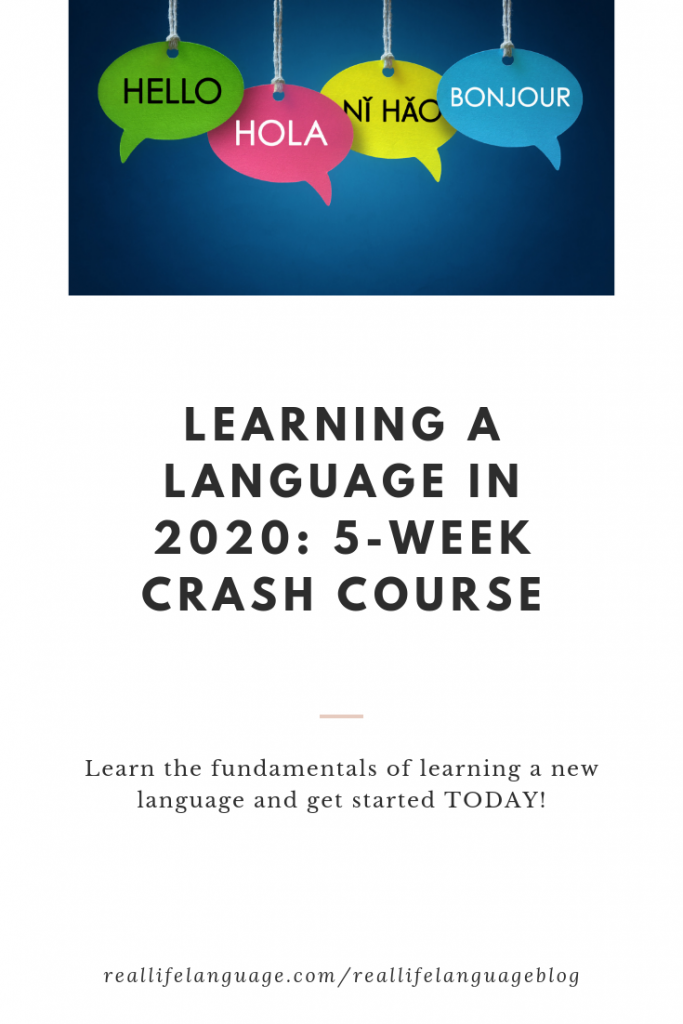
Week Two: Learning Vocabulary in a New Language
Learning vocabulary in a new language is obviously vital. This week, we will focus on learning vocabulary. Please note that you will learn a lot of vocabulary through reading, speaking to people, listening and any activity that immerses you in your target language, which we will explore in the next few weeks. This week, we will talk about deliberate, focused activities to learn vocabulary independently.
The secret to being able to express yourself in a language is to know enough words and phrases. Once you’ve memorized enough words and phrases, they all start working together, and you can start creating with language. This is a feature of the ACTFL intermediate level, or the CEFR B-level. A great way to do this is from playlists. Think relevant words and phrases that will help you survive in the target language. Think about useful phrases, like “I need”, “I want”, et cetera. This is called chunking.
Every word and phrase that you know in a language will help you express yourself more. With that said, focus on chunks of vocab that will be useful for communication and focus on that. You’ll learn all your grammar and vocab in context.
Create your own playlist, listen over and over. Then, record your own playlist, and you’ll have them right at hand on your phone.
Acting and learning languages have a great deal in common. When you’re starting out learning something over and over and over again to the point where it gets into your brain so you won’t forget it, this is what actors do with plays, and this is what successful language learners do when they’re starting out in a new language. You have to think like an actor- study your lines over and over until they stick.
Phrasebooks. Phrase books serve up thousands of useful words and phrases to get you communicating right away. They are the perfect place to start learning any new language.
Check out this video on phrasebooks.
Vocabulary Columns. A useful way to memorize all of that vocab we talked about is with vocabulary columns. Select a set of phrases that you want to learn and write them all down in a column on a piece of paper. You can either start with the target language, which is probably easier, or with English, and then draw a line. In the next column, write your other language equivalent. Again, this is easier if you start with the target language and start with recognizing.
Once you’ve done that successfully, you might have to look up a couple of words, fold the first column over. Now, translate, and again, going back and filling in any gaps that you might have, testing yourself and relearning those words that you missed. Fold the column over again and keep doing this until you can easily go back and forth between both languages, your native language and the target language.
Task Notebooks. As we’ve said every day throughout this crash course, the more vocabulary you know, the closer you’ll get to being able to express yourself in this new language. Task notebooks are a great way to personalize your learning and accelerate it. Get a notebook and select a task.
When we talk about tasks, we are talking about focusing on things you can do in the target language, for example, ordering in a restaurant, complaining about an erroneous charge on a bill, talking about what you did yesterday. Those are all linguistic tasks. There’s infinite possibility in them, but the beauty of task is that it focuses on specific things to learn how to do in this target language. Get a notebook where you select a task to learn, write down all the words and phrases you could possibly need for that, and then write them all out in the target language. Then, go back and do some of the memorization activities that we discussed in earlier days.
The Goldlist Method. I LOVE this! Polyglot Lydia Machova does an amazing job at explaining this simple and very effective method.